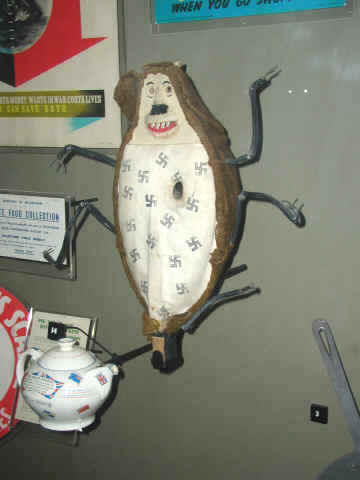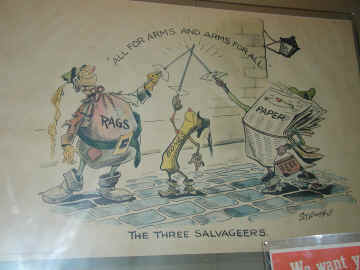Rationing dominated the lives of those who lived through the Home Front in World War Two. Rationing meant that all families were issued with the booklets below from early 1940 on. The left hand side is the inside of the booklet which ensured everybody got their fair share of food. The front cover on the right showed which family owned the book. Why was rationing of food and other articles needed?
|
|
As an island Britain imported a lot of what we needed. Before the war started, we imported 55 million tonnes of goods. German submarines (the U-boats) did a great deal to disrupt this flow as most of our imports came in by merchant boats. To ensure that everybody got a fair share of food, rationing was introduced for all – including the Royal Family.
It was very important that this happened in cities such as London as people in cities had less of a chance of growing their own food compared to those who lived in the countryside who could take advantage of the natural abundance of wild food there. City dwellers were encouraged not to waste anything and the squander bug, below, became a common object regarding this campaign to ensure everybody used what they needed to but wasted nothing.
|
The Squander Bug |
Rationing worked by each family having to register with a shop and the shopkeeper was issued with enough food for the people on his list only.
In January 1940, butter, sugar and bacon were rationed. This list was added to : meat in general, cheese, fresh eggs, jam, tea, breakfast cereals and milk soon followed.
Young children under five, under the National Milk Scheme, got one pint of milk. Pregnant women with an income of less than 40 shillings a week (less than £2) also got free milk. Children also got extra orange juice.
People with gardens were encouraged to dig them up and make allotments in their place. It was common for people to keep chickens, rabbits and goats in their back gardens also. The dried up moat at the Tower of London became an allotment to provide fresh vegetables for the Beefeaters. Women were encouraged to join the Women’s Land Army which worked on farms.
All those who experienced rationing were unlikely to forget died eggs. To ensure that as many eggs as possible were used and did not go off, the government used dried eggs. Just like dried mashed potatoes, they were eggs with their moisture taken out; turned into a powder and could be “reconstituted” simply by adding water. The Ministry of Food stated in a “Dried Egg” hand out that dried eggs were “pure fresh eggs with no additions, and nothing but the moisture taken away.” One level tablespoon of dried egg mixed with two level tablespoons of water “equaled one egg”!
The Ministry’s recipe for scrambled egg was 1 egg reconstituted (mixed with water), 0.5 of an ounce of fat and 1 tablespoon of milk. Melt the fat in a pan, beat the egg and milk together, add to the fat in the pan, season well and cook over a gentle heat. Those cooking were given added advice that diced cooked vegetables could be added to the mixture for extra flavour.
|
The Three Salvageers |
![]()


